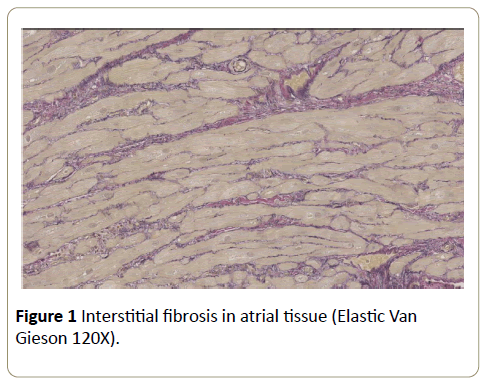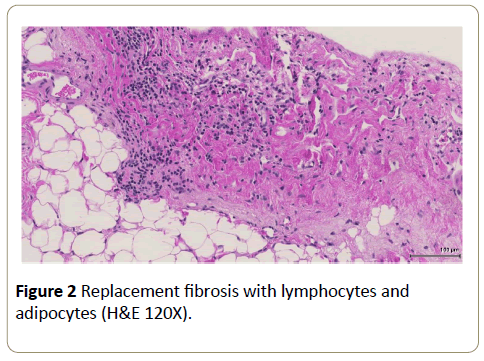Guy Hugues Fontaine*
Groupe Hospitalier Pitié-Salpêtrière, Paris, UK
- *Corresponding Author:
- Guy Hugues Fontaine
Groupe Hospitalier Pitié-Salpêtrière, Paris, UK
Tel: +33142160000
E-mail: guy.fontaine2@numericable.fr
Received date: February 06, 2017; Accepted date: February 12, 2017; Published date: February 14, 2017
Citation: Fontaine GH. New Mechanisms of Atrial Fibrillation. Interv Cardiol J 2017, 3:1. doi:10.21767/2471-8157.100050
Presentation of the transoesophageal echocardiogram for a patient undergoing transcatheter closure of a post infarction ventricular septal defect through a pseudoaneurysm at the basal rather than the apical part of the septum, posing a diagnostic and interventional planning challenge. Four dimensional imaging clarified the complex anatomy of the pseudoaneurysm, aiding device closure.
Short Communication
Atrial fibrillation is the most common arrhythmia in human.
It is a cause of mortality and morbidity leading to one of the
most important expenditure in the modern world. Especially, it
is increasing even further because of prolongation of life due
to the advances of medicine. A group from Paris has
attempted to demonstrate a link between fat in the
epicardium of atrial tissue to the production of fibrosis as a
possible mechanism of atrial fibrillation (AF) [1]. In their
discussion and conclusion, the authors admit that the
mechanism of AF is not completely understood. After an
excellent review of the CMR techniques available for the
identification of fat, fibrosis, and water in the heart, they note
a lack of spatial resolution of modern imaging techniques that
result in their performing ex vivo CMR on two hearts.
However, the modern digital microscope has an optimal
resolution which could enable a more precise interpretation of
the pathophysiology of AF.
The knowledge accumulated from my study of the histology
of ARVD of the right ventricle from 73 patients clearly shows
the topographic structure of fat, fibrosis, and possible
superimposed myocarditis. The atrial structure of the so-called
“normal heart” is similar to that observed on the free wall of
the right ventricle in ARVD. In addition to epicardial fat, there
is fibrosis of two forms, interstitial fibrosis which can be the
result of the genetic disorder of the disease or, replacement
fibrosis which may be the result of myocarditis generally
starting from the epicardium (epicardial-myocarditis as it is
known by clinicians) (Figures 1 and 2). A superimposed
myocarditis may have a spectrum of presentation from the
fulminant form leading to acute heart failure and death in a
few days associated with invasion of both ventricles and atria
by lymphocytes to that of a completely healed hyaline fibrosis.
There may be intermediate aspects of myocarditis with a
variable number of clusters of lymphocytes inside strands of
fibrosis called the chronic-active form [2]. Also, there may be a
genetic factor now considered to be of increasing importance
in the understanding of ventricular cardiomyopathies [3,4]. In
the background of atrial fibrillation [5] these cardiomyopathies
can be present but quiescent without arrhythmias in the
general population [6]. There can be additional complexity if
we consider that myocarditis alone can cause fibrosis and
adipocytes [2]. Therefore, myocarditis can produce an
arrhythmogenic substrate. In addition, the acute form can be a trigger of arrhythmias associated with an increase of CRP [7].
The same gene that is responsible for the problem in atrial
development can also explain the increased susceptibility of
these hearts [8] to be affected by myocarditis in a single or in
multiple episodes by entero and adeno viruses [9,10].
Therefore, the prevention or treatment of lone atrial
fibrillation may be due to two targets: protection against
and/or suppression of viruses [11], and prevention of fibrosis
[12]. In the future, the ideal approach to prevention of atrial
fibrillation will be the modification of the human genome
using the genetic approaches such as the CRISPRcas9 [13].
Finally, the results obtained in the treatment of atrial
fibrillation may be expanded to the treatment of the whole
heart since the atrium and ventricle are two parts of the same
embryologic structure as has been recently confirmed by the
finding of “atrial dysplasia” [14]. A simple new tool to evaluate
patients at risk of atrial fibrillation and to follow the effect of
treatment should be the use of the new 16 lead High
Definition ECG recorder [6].
Figure 1: Interstitial fibrosis in atrial tissue (Elastic Van Gieson 120X).
Figure 2: Replacement fibrosis with lymphocytes and adipocytes (H&E 120X).
References
- Hatem SN, Redheuil A, Gandjbakhch E (2016) Cardiac adipose tissue and atrial fibrillation: the perils of adiposity. Cardiovasc Res 109: 502-529.
- Cihakova D (2011) Myocarditis, InTech Publications, EU.
- Fressart V, Duthoit G, Donal E, Probst V, Deharo JC, et al. (2010) Desmosomal gene analysis in arrhythmogenic right ventricular dysplasia/cardiomyopathy: Spectrum of mutations and clinical impact in practice.Europace 12: 861-868.
- Fontaine G, Fornes P, Fontaliran F (2001) Myocarditis as a cause of sudden death.Circulation 103: e12.
- Lubitz SA, Yin X, Lin H, Kolek M, Smith GJ, et al. (2016) Genetic risk prediction of atrial fibrillation. Circulation.
- Fontaine G, Chen HS (2014) Arrhythmogenic right ventricular dysplasia back in force. Am J Cardiol 113: 1735-1739.
- Bonny A, Lellouche N, Ditah I, Hidden-Lucet F, Yitemben MT, et al.(2010) C-reactive protein in arrhythmogenic right ventricular dysplasia/cardiomyopathy and relationship with ventricular tachycardia.Cardiol Res Pract 24: 919783.
- Lopez-Ayala JM, Pastor-Quirante F, Gonzalez-Carrillo J, Lopez-Cuenca D, Sanchez-Munoz JJ, et al. (2015) Genetics of myocarditis in arrhythmogenic right ventricular dysplasia. Heart Rhythm 12: 766-773.
- Bowles NE, Ni J, Marcus F, Towbin JA (2002) The detection of cardiotropic viruses in the myocardium of patients with arrhythmogenic right ventricular dysplasia/cardiomyopathy. J Am CollCardiol 39: 892-895.
- Gesualdo M, Scicchitano P, Carbonara S, Ricci G, Principi M, et al. (2016) The association between cardiac and gastrointestinal disorders: Causal or casual link? J Cardiovasc Med (Hagerstown) 17: 330-338.
- Schultheiss HP, Piper C, Sowade O, Waagstein F, Kapp JF, et al. (2016) Betaferon in chronic viral cardiomyopathy (BICC) trial: Effects of interferon-ÃÆÃâÃâ¦Ã½ÃÆââ¬Å¡Ãâò treatment in patients with chronic viral cardiomyopathy.Clin Res Cardiol 105: 763-773.
- Lin CM, Chang H, Wang BW, Shyu KG (2016) Suppressive effect of epigallocatechin-3-O-gallate on endoglin molecular regulation in myocardial fibrosis in vitro and in vivo. J Cell Mol Med 20: 2045-2055.
- Charpentier E, Doudna JA (2013) Biotechnology: Rewriting a genome.Nature 495: 50-51.
- Fontaine G, Andreoletti L, Redhueil A, Gandjbahch E, Frank R (2016) Epsilon wave on a loop recorder in a patient with myocarditis. Europace.



